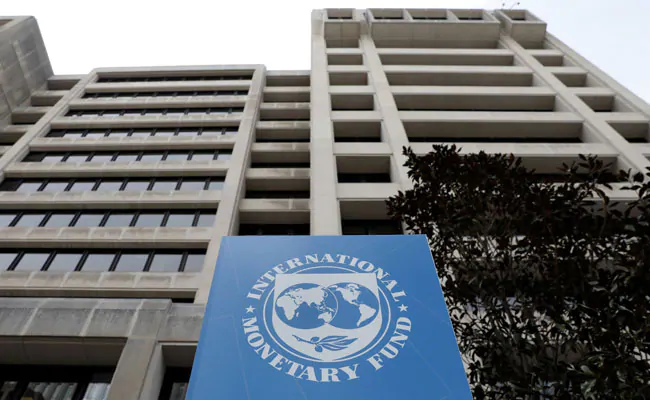Pandemic-Hit Global Economy Projected To Grow At 5.5% Cent in 2021: IMF

[ad_1]
The global economy contracted by an estimated 3.5 per cent in 2020 amid the unprecedented health crisis.
Washington, D.C.: The global economy, ravaged by the Covid-19 pandemic, is projected to grow at 5.5 per cent in 2021 and 4.2 per cent in 2022, the International Monetary Fund (IMF) said on Tuesday, reflecting the expectations of a vaccine-powered strengthening of business activities later in the year and additional policy support in a few large economies.
“In our latest World Economic Outlook forecast, we project global growth for 2021 at 5.5 per cent, 0.3 percentage point higher than our October forecast, moderating to 4.2 per cent in 2022,” said Gita Gopinath, Chief Economist of the IMF.
The global economy contracted by an estimated 3.5 per cent in 2020 amid the unprecedented health crisis.
The 2021 forecast is revised up by 0.3 percentage point relative to the previous forecast (5.2 per cent) in October last year, reflecting expectations of a vaccine-powered strengthening of business activities later in the year and additional policy support in a few large economies, the IMF said.
India manufactures more than 60 per cent of all vaccines sold across the globe, and while its $40 billion pharmaceutical sector is not yet involved in the production of the expensive Pfizer Inc and Moderna shots, the nation will play a pivotal role in immunising much of the world.
According to Gopinath, the upgrade for 2021 reflects the positive effects of the onset of vaccinations in some countries, additional policy support at the end of 2020 in economies such as the United States and Japan and an expected increase in contact intensive activities as the health crisis wanes.
However, the positive effects are partially offset by a somewhat worse outlook for the “very near-term’” as measures to contain the spread of the virus dampen activity, she said.
Noting that there is a great deal of uncertainty around this forecast, Gopinath said that greater success with vaccinations and therapeutics and additional policy support could improve outcomes, while slow vaccine rollout, virus mutations, and premature withdrawal of policy support could worsen the outcomes.
If downside risks were to materialise, a tightening of financial conditions could amplify the downturn at a time when public and corporate debt are at record highs worldwide, she added.
The Indian-American economist said the projected recovery in growth this year follows a severe collapse in 2020.
Even though the estimated collapse (-3.5 per cent) is somewhat less dire than what the IMF had previously projected (-4.4 per cent), owing to stronger-than-expected growth in the second half of last year, the 2020 economic shrinkage remains the worst peacetime global contraction since the Great Depression (1929-1933).
Due to this partial rebound, over 150 economies are expected to have per-capita incomes below their 2019 levels in 2021.
That number declines, only modestly, to around 110 economies in 2022.
At $22 trillion, the projected cumulative output loss over 2020-2025 relative to the pre-pandemic projected levels remains substantial, she said.
The IMF, in its World Economic Outlook (WEO) update, said that consistent with recovery in global activity, global trade volumes are forecast to grow about eight per cent in 2021, before moderating to six per cent in 2022.
Services trade is expected to recover slower than merchandise volumes, which is consistent with subdued cross-border tourism and business travel until Covid-19 transmission declines everywhere, it said.
According to the WEO, the emerging market and developing economies are projected to trace diverging recovery paths.
Considerable differentiation is expected between China — where effective containment measures, a forceful public investment response, and central bank liquidity support have facilitated a strong recovery — and other economies.
Oil exporters and tourism-based economies face particularly difficult prospects, considering the expected slow normalisation of cross-border travel and the subdued outlook for oil prices.
As noted in the October 2020 WEO, the pandemic is expected to reverse the progress made in poverty reduction across the past two decades.
Close to 90 million people are likely to fall below the extreme poverty threshold during 2020–21.
Across regions, vulnerabilities, economic structure, and pre-crisis growth trends, together with the severity of the pandemic and the size of the policy response to combat the fallout, shape recovery profiles.
Notable revisions to the forecast include the one for India (2.7 percentage points for 2021), reflecting carryover from a stronger-than-expected recovery in 2020 after lockdowns were eased, the IMF said.
[ad_2]
Source link



